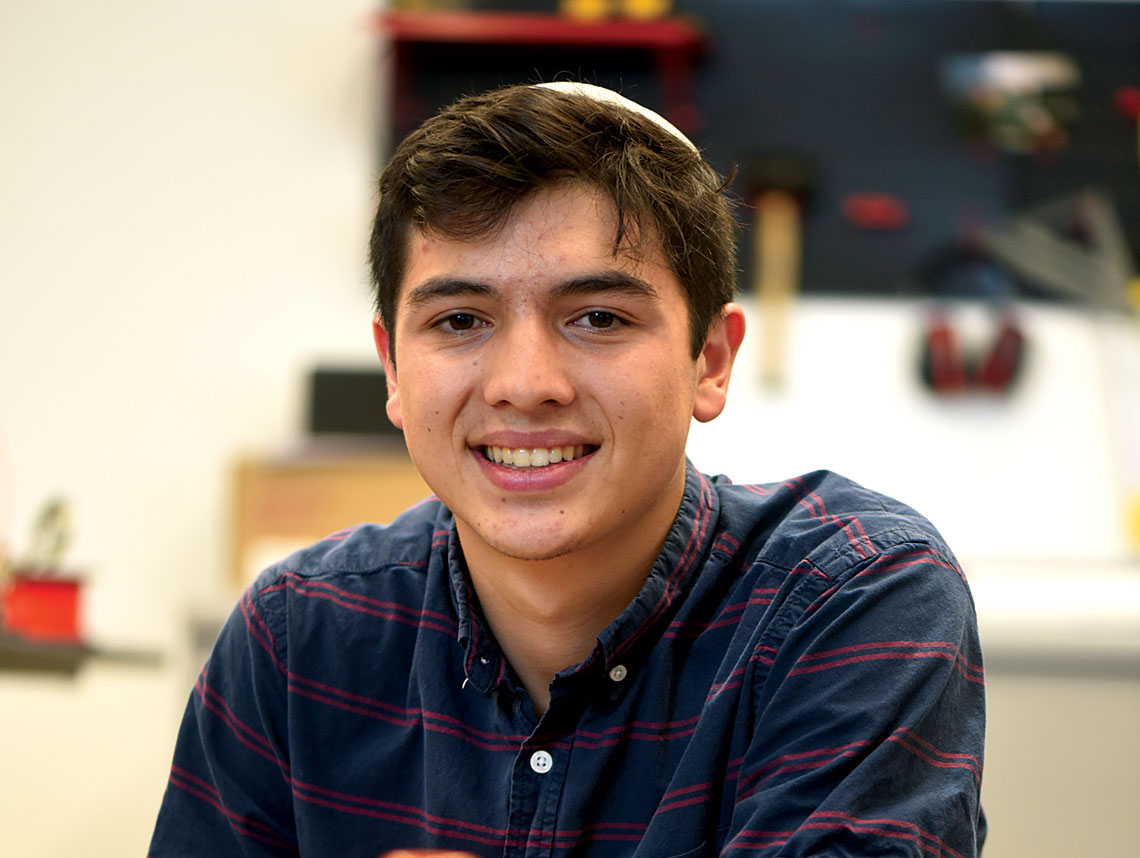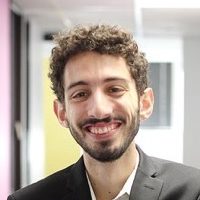 Photo by Paul Takizawa
Photo by Paul Takizawa AGE: 18
HIGH SCHOOL: Shalhevet High School
GAP YEAR: Undetermined
GOING TO: Brown University
During his sophomore year at a public school in San Francisco, Seiji Shaw made it with his robotics team to an international competition in St. Louis, where teens from around the world deployed handmade robots to compete with each other. The experience solidified his love of the highly technical sport.
But after his family moved to Los Angeles and he enrolled at Shalhevet High School for his junior year, he ran into a problem: There was no robotics team.
“Shalhevet had the remnants of a team from previous years that hadn’t been sustainable,” he said. “But I wanted to start fresh.”
Shaw decided he would will into existence a team of dedicated builders and programmers to assemble battle-ready bots.
The school eventually enrolled in the FIRST Robotics Competition, short for For Inspiration and Recognition of Science and Technology. Each January, FIRST, the nonprofit that runs the competition, releases the rules of that year’s game, touching off a six-week frenzy of planning, design and assembly called “build season.”
In 2016, Shaw’s junior year, FIRST invited teenagers from around the world to enter the competition in which their robots would have to scoop up large rubber balls — the kind often used in the game dodgeball — and launch them over a goalpost’s 10-foot-high crossbar.
To be able to enter the competition, Shaw — whose mother is Japanese and whose first name means “pure” in Japanese — had to put in place the infrastructure to build robots.
He put together an annual budget of about $20,000 to present to Shalhevet’s administration. Then he went about securing grants, donations, sponsorships and space to create the robot. Shaw’s dad took him to Home Depot and Harbor Freight Tools to buy the equipment needed to begin building.
He advertised to the student body to attract teammates, recruiting about 15 — somewhat small for a robotics team, but enough to make do. Within two months, the club was up and running.
Shalhevet placed 16th out of 66 teams in FIRST’s Los Angeles regional competition, the highest-ranked rookie squad.
Though the team didn’t fair quite as well in this year’s competition — in which its robots had to hurl Wiffle Balls through an 8-foot-high goal — Shaw said it wasn’t victory that motivated him, but rather the joy of “working with other people and building something really, really cool.”
“It’s really satisfying with a group of other people to see your robot drive for the first time,” he said.
Shaw’s passion for technology began in eighth grade, when he started putting together electronic circuits. That year, he built a theremin, an electronic musical instrument that changes pitch based on how close the player’s hand comes to a sensor.
During his freshman year at Lowell High School in San Francisco, he joined the robotics team. The following year, as the team’s head of programming, he taught himself the Java computer language. Since then, his interest has skewed more toward programming robots’ brains than constructing their nuts and bolts.
After enrolling in an Advanced Placement Computer Science class at Shalhevet, Shaw began exploring assembly language programming, a machine language that he explained as “basically as close as you can get without writing ones and zeros directly into your computer.”
As for the future of the robotics team at Shalhevet, he’s confident he’s leaving it in good hands with the school’s juniors and sophomores.
The team — which has received funding from NASA (the result of a grant application painstakingly written by students, with help from teachers and parents) and Google (via a student’s parent who works there) — now has about 20 members.
“I tried to dedicate a lot of my time to making the team as sustainable as it can be,” Shaw said. “They know what they’re doing, and I think they’re ready to take it on.”






















 More news and opinions than at a Shabbat dinner, right in your inbox.
More news and opinions than at a Shabbat dinner, right in your inbox.